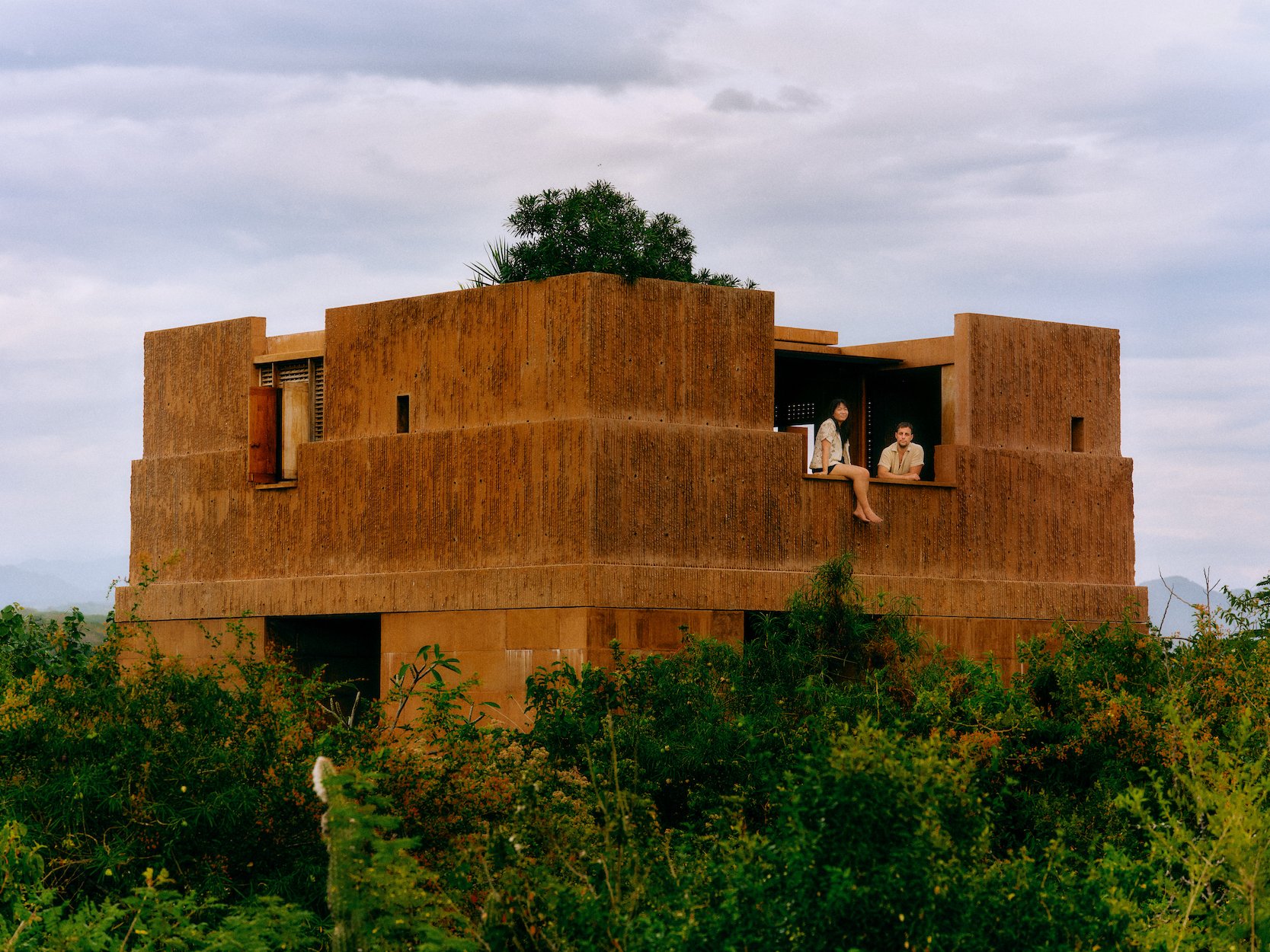
When I talk to designers Nick Ozemba and Carlos H. Matos, it’s a snowy day in Brooklyn. It’s been below freezing for a few days in a row, and the forecast gives me no hope that the cold will let up. It’s tempting to think of Puerto Escondido—a coastal town in the state of Oaxaca, in southern Mexico, where Dune, a new line of indoor-outdoor fixtures by In Common With (the lighting-design firm Ozemba co-founded with Felicia Hung, in 2018), was recently photographed at Casa Monte, a house Matos designed—as the perfect getaway from our chilly environs.
Were I to give into that kind of thinking, I would be far from alone. In recent years, the formerly sleepy town has become a popular tourist destination, prompting prolific development. Activist groups have been organizing to ensure that building in the area is done responsibly, slowing down current construction and urging greater regard for the coastal ecosystems to which Puerto Escondido is home.
But not all construction in Puerto Escondido threatens its surroundings. The place where Matos and Ozemba have rooted their aforementioned designs is somewhat removed from this contested setting, tucked into an area whose development was spurred by Mexican artist Bosco Sodi’s commissioning of Casa Wabi, a nonprofit cultural center designed by Tadao Ando, with additional buildings by Álvaro Siza and Kengo Kuma.
The houses in this part of Puerto Escondido are inhabited only in short spurts, by visitors to the area, and each is architecturally experimental. (Although Ozemba tells me that they do have a couple of things in common: They’re all made of concrete and are all off the grid.) Beyond their materiality, the homes intentionally bring their inhabitants closer to the environment—and to themselves. The architecture has the particular effect of exposing people to, rather than protecting them from, the elements, conjuring up a range of thoughts and emotions.
When we speak, Matos bemoans the state of tourism-driven development across Mexico, noting the way it all seems to cater to the type of tourist who just wants to have an easy, frictionless vacation, to experience a life that is practically impossible. In our conversation, he and Ozemba—each in his own way—embrace something else entirely to be found in Puerto, as the locals call it: a deep connection with the natural world, facilitated by design; the theater of the everyday; and the possibility that architecture might engender an edifying challenge.
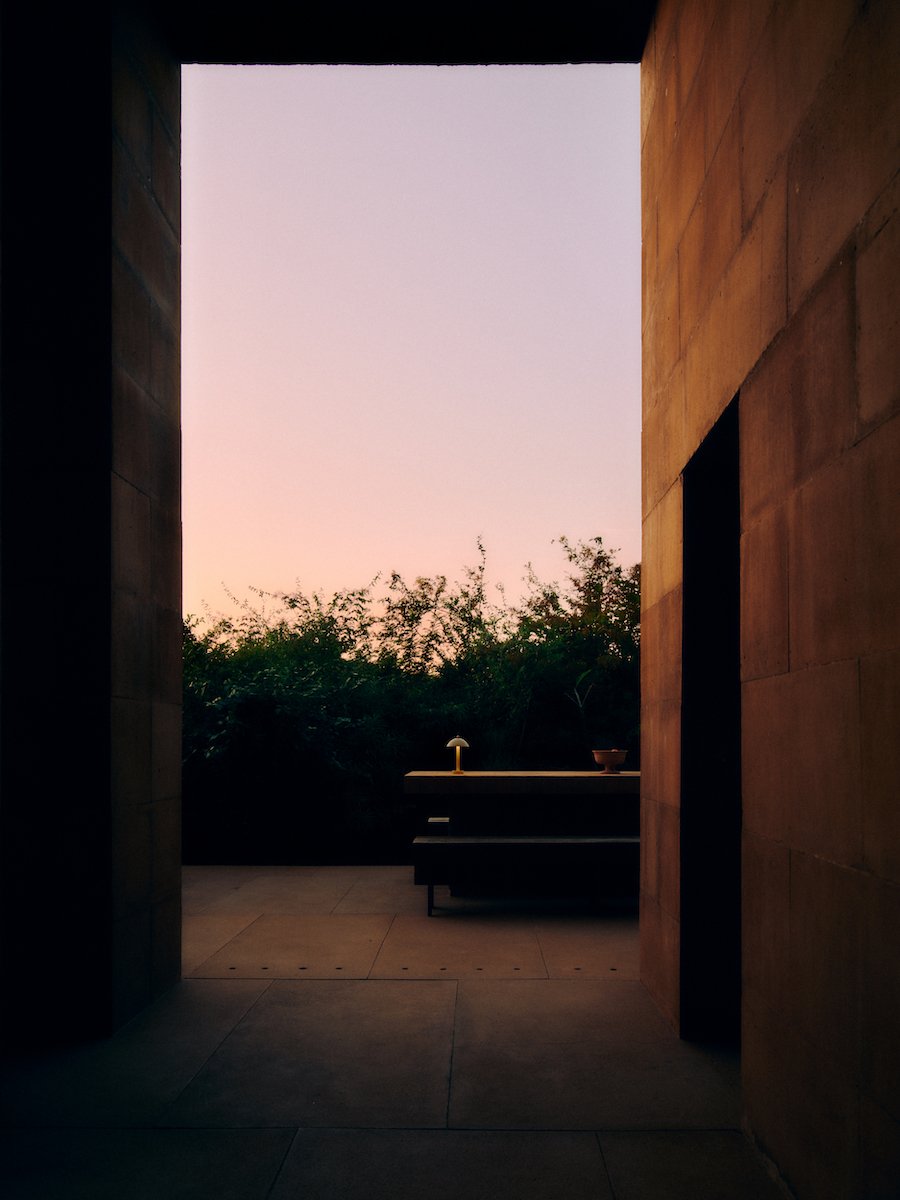
Tell me about the part of Puerto Escondido you’re interested in.
NICK OZEMBA: It’s about forty minutes away from the center city, on a road that has all these small houses on it. This is the Puerto Escondido that I know and love. The whole region in general has a laid-back attitude, which comes through in the architecture.
CARLOS H. MATOS: I did a residency at Casa Wabi—that’s what brought me to the area.
It took me about five, six years from starting to visit there to finishing Casa Monte. Over that time, I saw how the area developed and sprawled, which is something that is unfortunately a repetitive process that happens in Mexico. Every visit I made, I’d see things popping up; it had a gold-rush feel to it. But Oaxaca is a bit more resilient than other parts of Mexico. People there are more protective of their land.
NO: But part of what makes this area so special is that it feels like nothing is super precious. There are no doors on the buildings, which is a huge contrast to almost any other place that people go to be “away.” If I think about luxury travel, people are, like, “I want to lock the door.” “I want an air conditioner.” Casa Monte, and the homes around it, are none of those things. It’s as if they are saying, “If you’re here, then you need to experience what it’s really like to be here.”
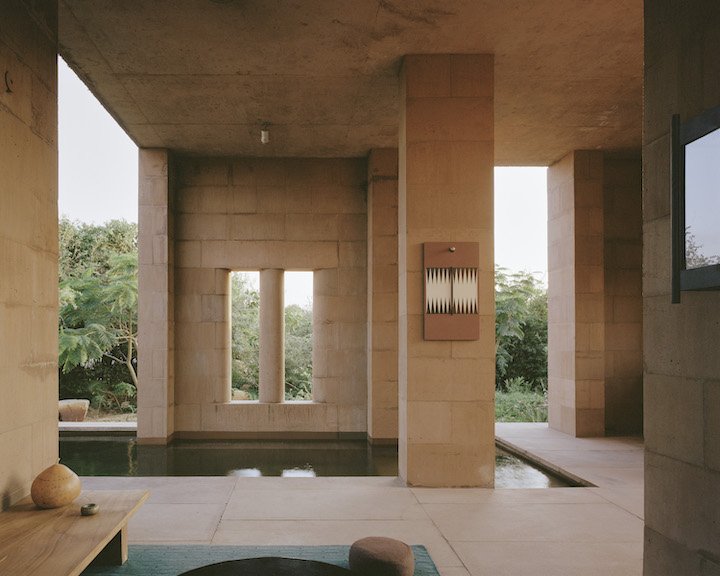
What is that experience like, exactly?
NO: At Casa Monte, you’re in the desert. It’s really bright, then you walk into a stairwell that’s immediately dark. There’s no lighting at all. Then you end up in a bedroom on the second floor that’s surrounded on all four sides by these beautiful shutters that filter in light, with the bed in the center of the room.
There’s something cinematic about it. You’re being drawn through compression to expansion, through light and dark, and the materiality shifts from floor to floor. And when you’re there, you don’t see anyone.
When I drew the lamps in the Dune line for the first time, I was staying in Casa Tiny, designed by Aranza de Ariño, down the road from Casa Monte. I was thinking about how the things we make don’t need to take themselves too seriously. This line is our most affordable collection, too. Those ideas came from the architecture.
You’re saying that design can have a real impact on our lives without being over the top.
NO: Right. I tend to design from an interior perspective. I think about the theater of how an object is used: What is the atmosphere this thing is creating?
A lot of what In Common With makes isn’t about making a statement; it’s about fading into the background. With the lamps I mentioned, I wanted to make an object that could move between all these different spaces somewhat anonymously, adding something to the conversation without taking center stage. In that way, interiors are more my muse than a person.
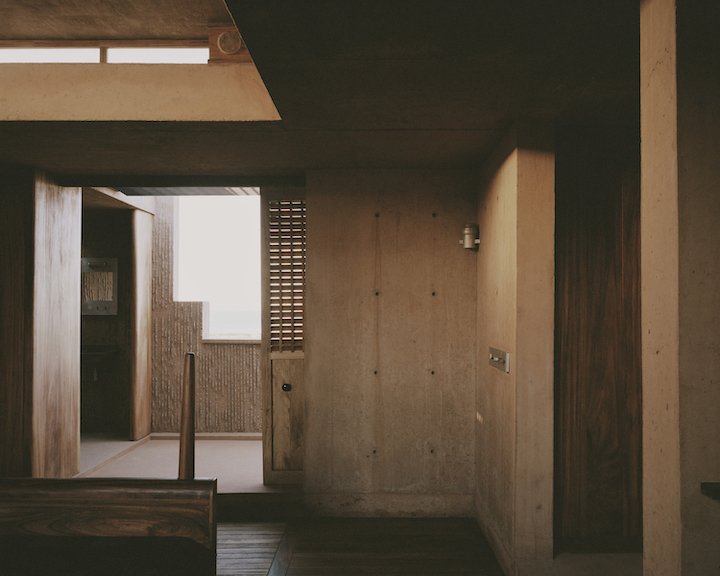
It seems like Casa Monte was designed with a similar flexibility and subtlety in mind.
CM: Casa Monte is an intervention—it’s pretty much an open space. It’s a platform that raises you from the ground and separates you from the brush below, which is very dense and kind of spiky and full of insects. This house, by the way, has become a sanctuary for bats—which is funny because some people complain, but there’s a lot of people who actually like the bats. When I was building it, I woke up a few times to chachalacas [chattering birds] in the trees. In a way, the house attracts nature back into its rooms.
But it’s not necessarily a specific person’s house. It’s a house for people to experience for two, three days. If you were to live there, you would probably complain because it’s not fully enveloped in comfort. It’s a place where you can retreat intermittently and experience more of a primal form of living.
What do you mean by that?
CM: When you see, for example, medieval architecture, it’s a sculpture as well as a building. The stairs are too steep. It’s dangerous. There are no balustrades. By “primal,” I mean going back to that, creating a house that activates you.
You have to be able to survive here. It’s not a sit-down-on-the-camastro-and-ask-for-your-margarita kind of holiday. It’s a place that puts you to work. It invites people to engage with the architecture, to be aware of their surroundings. That generates resilience.
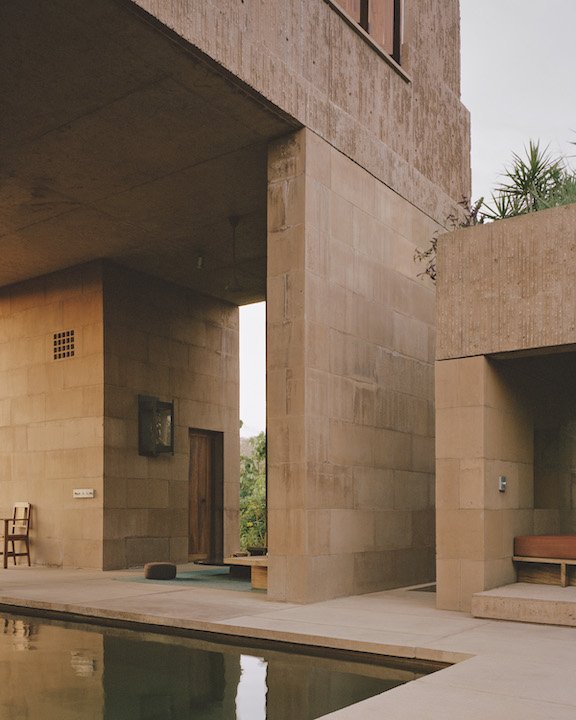
So this area—the weather, the landscape, the nature—and the fact that people are only staying for a few days allow the architecture to be a bit more elemental.
NO: That’s the thing. At Casa Tiny, there’s only one light fixture: a light bulb hanging from a string. It’s in the center of the structure, over the kitchen counter. At night, when the sun is gone, you end up feeling really connected to whatever is happening outside—instead of an interior that’s super lit-up.
At Casa Monte, like I mentioned, Carlos did a lot of really interesting things with lighting design, creating small spaces and skylights for the sun to come through and move around throughout the day. Of course, everyone experiences this differently, but for me, that play with light creates an ambiance that complements the space and the people occupying it.
Right—those atmospheric qualities that you were talking about.
NO: Yes: an atmosphere where [the architecture, or design], is supporting instead of leading. Every time I go to Puerto Escondido, I get immersed in a setting that encourages that way of thinking.
It changes what you might anticipate from a residence. Places that challenge our expectations of a home—what’s the value of that?
NO: The architecture in this part of Puerto Escondido really embodies its setting. The value of that is that it encourages you to connect with the environment around the home, and the architecture contributes to that connection. When I’m in this place, I feel like I can reconnect with myself.
This conversation was compiled from two interviews and has been condensed and edited for clarity.